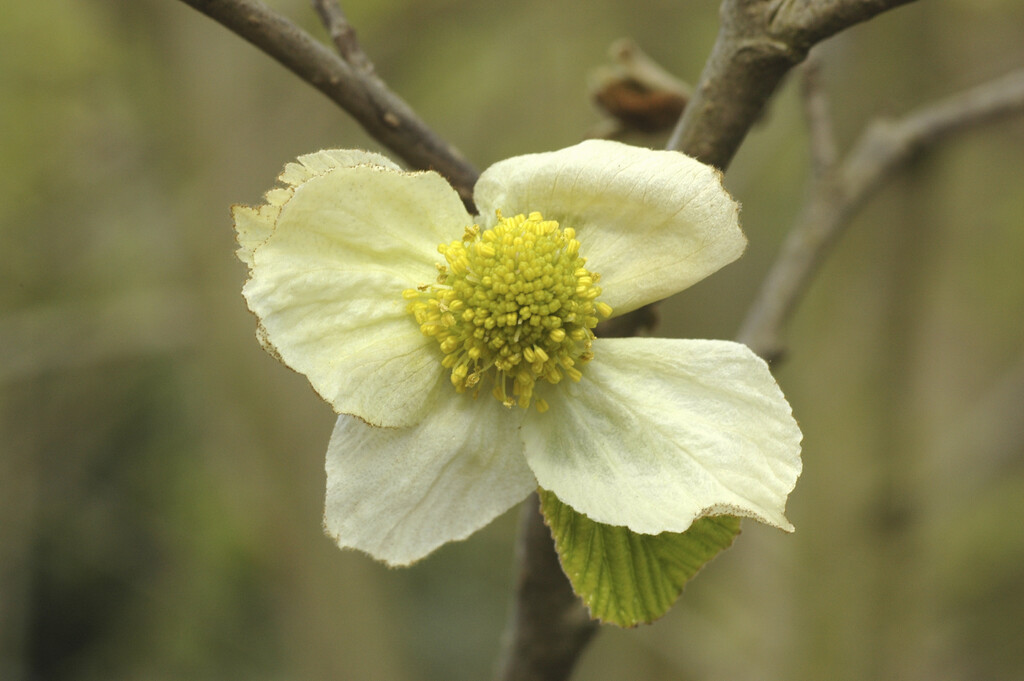Parrotiopsis jacquemontiana
Jacquemont’s parrotiopsis
A large deciduous shrub or small tree, to around 6m high and with an upright habit. Tiny flowers with bright yellow stamens surrounded by large white bracts are produced on bare branches in spring, and sometimes intermittently in summer. Leaves are rounded to broadly ovate, toothed and glossy deep green, turning golden yellow in autumn
Size
Ultimate height
4–8 metresTime to ultimate height
10–20 yearsUltimate spread
2.5–4 metresGrowing conditions
Moisture
Moist but well–drainedpH
Acid, Neutral, AlkalineColour & scent
| Stem | Flower | Foliage | Fruit | |
| Spring | White Yellow | Green | ||
|---|---|---|---|---|
| Summer | Green | |||
| Autumn | Green Yellow | |||
| Winter |
Position
- Full sun
- Partial shade
Aspect
South–facing or West–facing
Exposure
Sheltered Hardiness
H6Botanical details
- Family
- Hamamelidaceae
- Native to GB / Ireland
- No
- Foliage
- Deciduous
- Habit
- Columnar upright, Spreading branched
- Name status
Correct
How to grow
Cultivation
Thrives in deep, fertile, lime-free soil in light shade, but will tolerate a range of soils and positions. May be grown over chalk if soil is at least 60cm deep. Flowers may be damaged by late frosts
Propagation
Propagate by seed or by softwood, semi-ripe or hardwood cuttings. Seed germination requires cold stratification and may take up to 18 months
Suggested planting locations and garden types
- Architectural
- Cottage and informal garden
- Flower borders and beds
Pruning
Minimal pruning required, see pruning group 1
Pests
Generally pest-free
Diseases
Generally disease-free
Get involved
The Royal Horticultural Society is the UK’s leading gardening charity. We aim to enrich everyone’s life through plants, and make the UK a greener and more beautiful place.
